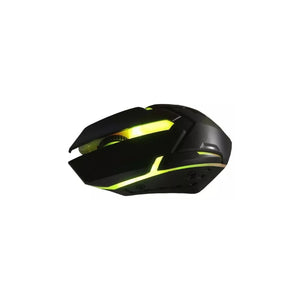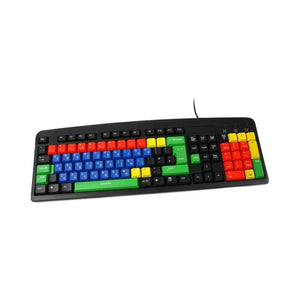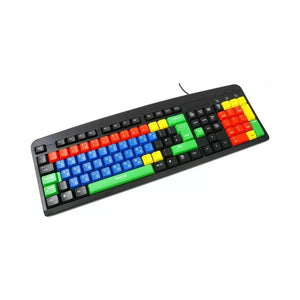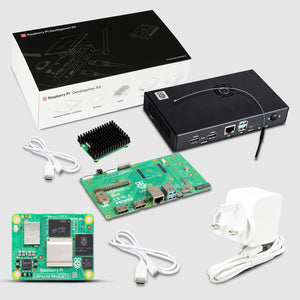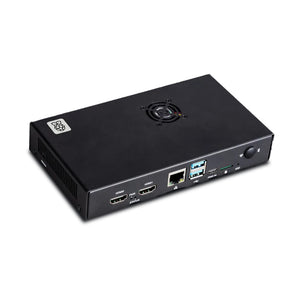In the world of modern times with the advanced and hi-tech products, there is still a certain charm and warmth in the elegant lines of the jukebox. These classic products take down to you down the lane, where you can enjoy the mesmerizing things from the past. Bob Murphy, creator of Modern Jukebox has the same fantasy to feel the things that he did in his childhood to make a refreshing experience. He decided to recreate this piece of vintage nostalgia to become happy that made him on the pages of the Magpi Magazine. Let’s hear the story of the development of the retro jukebox in this modern hi-tech world!
About the creator
Bob(AKA this old geek) has done work all of his life and recently retired from Clorox Company, where he worked as a database administrator. After his retirement, he wanted to indulge his time in the things that make him happy, and Modern Jukebox conceived as an idea in his mind. He said in the interview with the MagPi Magazine that “My father had a 1940s floor-standing Zenith radio that I enjoyed listening to as a child,” he shares. “That kindled a long-term interest in jukeboxes and Art Deco. I set myself the challenge of building my own jukebox, both for the learning experience and the satisfaction of having a personalised object.”
Features of Modern Jukebox
Bob started developing the Modern Jukebox with the things that he had to live his childhood again. He firstly started with building the casing with the printing process of the jukebox to provide an outlook to it. This work took 75 hours to complete, not acknowledging or addressing failed prints. After all of his hardwork and dedication, he developed a beautiful design of the casing, in his interview he said “My printer is a Prusa i3 MK3S, an excellent and reliable printer,” Bob tells us, “but it requires mechanics like the belts to be properly tuned and adjusted. Once the printer and 3D software are dialled in, it’s stick-to-it. Major parts took from 4–12 hours to print, over about four months. 3D printing is iterative, and I’m a poor planner. A few long reprints were needed once the electronics were ready to be fitted, to correct for clearances and other problems.” 
Internal working and components
We know that you are pretty much excited about the Modern Jukebox and want to understand the internal mechanism of the beautiful crafted work. If we look at the internal components of the modern jukebox then Raspberry Pi is the micro-controller on which the whole system. Box explained the system of modern jukebox in the interview for all the tech-enthusiasts that want to develop their jukebox and live their childhood as well. He said “Raspberry Pi is at the base of a stack of electronics,” says Bob. On top of Raspberry Pi, which runs the Volumio music app, Bob has an IQaudio DigiAMP+ HAT to route music to two Dayton Audio RS100-8 full-range speakers, and above that is an Adafruit Perma-Proto board powered by 5 V from the IQaudio amp. “That board hosts a SparkFun Sound Detector through an Arduino Micro. The Arduino uses the Sound Detector output to power NeoPixel strings for sound-reactive lighting effects.”
What’s different about Modern Jukebox?
Some of you might be wondering if the modern jukebox is similar to the old jukebox or if there any “Modern” changes in it. Bob understood that there should be a fusion of the old jukebox feel with the new advanced components that would make the jukebox better. He explained that “the Modern Jukebox can be controlled either by the touchscreen display or via a web page from a computer, tablet, or phone, courtesy of Volumio. The user can raise and lower volume, choose music, skip tracks, pause/play, and so on. “On the back, there’s an on-off switch and a switch that controls the NeoPixel LEDs,” Bob reveals. “The ‘Tube’ LEDs around the outside can be set to sound-reactive, bubble/chaser through a colour wheel, or off. The LEDs around the grille rotate through a colour wheel at startup, then stay lit always.”

Adaptability and Improvement
One of the best qualities of Bob is that he has the humble nature of appreciating the work of others and looking at the powerful features of their products. He researched in the market of other projects also from which he got inspired and adapted anything from those projects to his Modern Jukebox like touch screen panel. Now one can change the songs from the touch panel that provides a different feature in his jukebox.
He added in this interview “This jukebox was such a long project, it wouldn’t be possible without prior art from other makers,” he notes. “I built on the efforts of Marco Gregorio for the 3D jukebox model, and Michael Bartlett for the lighting effects.”
About the inspiration
Bob learned a lot of things in the path of development of the modern jukebox. He understood the projects that were built by other creators that also inspired him to add some more features in his project. “I modified Marco’s excellent full-sized, solid 3D Wurlitzer model. There were a very large number of components to review – what to keep, what is missing – to make this a scaled-down, modern-tech, 3D-printable object.” said Bob
It’s fair to say that Bob’s Modern Jukebox has been a labour of love, but he’s received some super-enthusiastic feedback from makers and admirers, with one friend asking, “Wow – is he taking orders?” Bob estimates that he has spent around 160 hours in the course of a year on his creation, but a quality output requires an investment of time. “I’m not on a deadline, so my approach to projects is like ‘painting the Sistine Chapel’ – it takes an unknown amount of time and it’s done when it’s good!”



